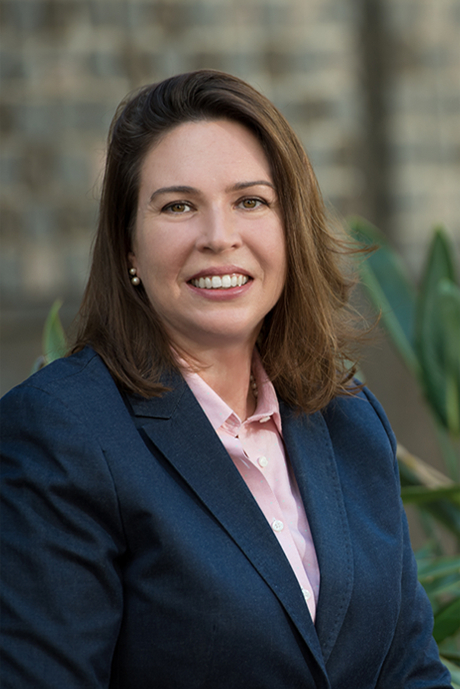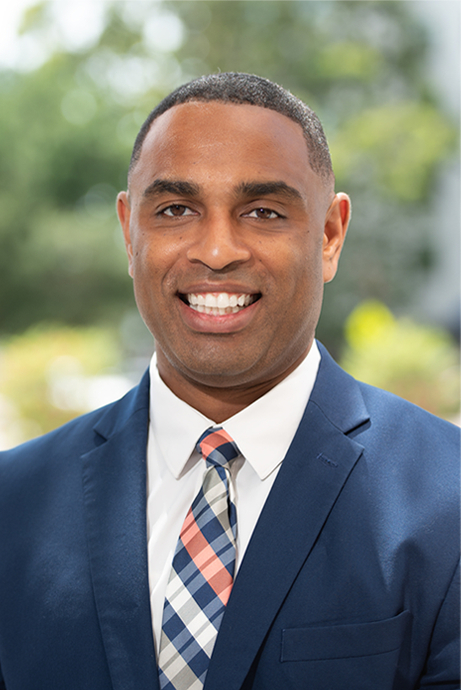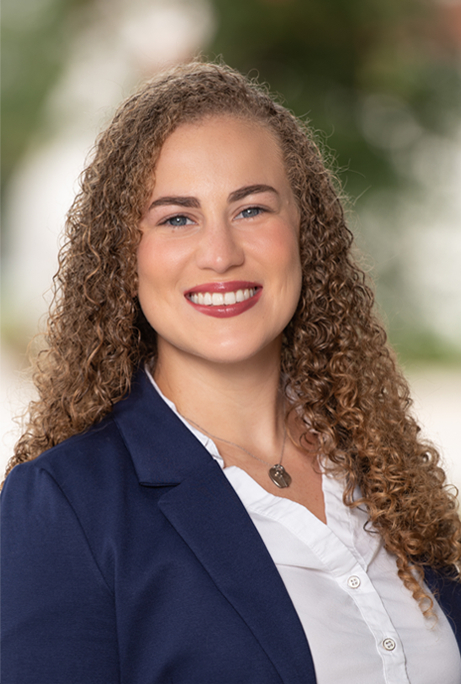Drivers Leaving the Scene of a Crash – Florida 2014 Senate Bill 102

Leaving the scene of an accident involving a death is already a first-degree felony punishable by up to 30 years in prison, although it carries no minimum mandatory sentence. DUI manslaughter is also a first-degree felony but it carries a mandatory minimum sentence of four years.
The minimum mandatory requirement means that after a conviction for that charge the court must impose that amount of time in prison (as a minimum) although the court can impose up to the statutory maximum. The person must serve that minimum mandatory time day for day in prison (with no gain time or potential for early release).
As a criminal defense attorney in Tampa that represents clients charged with different versions of Florida’s leaving the scene statutes (often called “hit and run”), I would argue that the lack of a minimum mandatory penalty in Florida’s statute does NOT lead to more people fleeing the scene after a car crash.
Changing the law isn’t going to lower the number of these cases. Instead, it will create more injustice as courts must impose the “minimum mandatory” sentences instead of a fair sentence based on the facts of the case.
Enhancing the Penalties for Leaving the Scene
In a recent article in the Tampa Bay Times, “As hit and run cases multiply is Florida law to blame?“, reporter John Romano poses the question this way:
Do you know what you call that? An incentive to flee, no matter how many broken or dying bodies you leave behind. Even nonfatal accidents reward hit-and-run drivers with similar or lesser penalties than those convicted of DUI.
When you think of it that way, the only reason for an impaired driver to stick around is his/her own sense of compassion and responsibility for the carnage they have created.
That’s not exactly true. If only non-serious injuries occur then remaining at the scene might mean an arrest for “DUI with non-serious bodily injury” which is a misdemeanor in Florida. On the other hand, “leaving the scene with non-serious bodily injury” is a third degree felony which is much worse.
Also, many people get caught by a law enforcement officer while they are driving away from the scene. For those individuals, the penalties are certainly more serious because the individual could face the leaving the scene charges and the DUI related charges.
Nevertheless, the idea that someone might get away with something by leaving the scene is often true. In many of these hit and run cases, no one can identify the driver. Unless someone gets a clear view of the person driving and writes down the tag number, there is usually little other evidence. Even when a witness can identify the driver, unless the investigating officer gets a full confession from the driver, these cases are difficult to prosecute.
If the driver waits 12 hours, then retains an attorney and invokes his right to remain silent and to have an attorney present for questioning, then as a practical matter – there is little chance of being charged with a DUI related offense.
Without the confession, the chances for a leaving the scene prosecution also decrease dramatically. Investigators focus their resources on the cases involving death or serious bodily injury and the rest often go unsolved. For law enforcement officers – these cases must be extremely frustrating and take up tremendous resources.
Hit and Run Cases Are Up in Florida
According to the Florida Highway Patrol, the number of hit and run crashes is up. According to the FHP “hit and run” page on their website:
- Hit-and-run crashes involving fatalities increased from 162 in 2011 to 168 in 2012.
- The number of hit-and-run crashes statewide equaled 69,994 in 2012.
- Three out of every five fatalities in 2012 were pedestrians struck in hit-and-run crashes.
FHP’s crime statistics estimate that in Hillsborough County, Pinellas County and Pasco County combined, more than 8,000 of these hit and run cases occurred last year. Although most involve only minor property damage.
Florida State Senator, Miguel Diaz de la Portilla, R-Miami, wants to increase the penalties in Florida’s hit-and-run statute, Florida Statute Section 316.027. He has introduced Senate Bill 102. It turns any hit and run conviction involving even non-serious injury into a felony offense with at least a four year minimum mandatory prison sentence. Even if it were proven that the person was not DUI and that leaving the scene did not contribute to any delay in the victim receiving medical treatment, it still would require a four year min man.
In fact, it imposes these new minimum mandatory penalties –
- a four (4) year minimum mandatory provision if any non-serious personal injury occurs;
- a seven (7) year minimum mandatory provision for any serious injury; and
- a ten (10) year minimum mandatory provision if a death occurs after the crash.
Florida 2014 Senate Bill 102 (to be known as the “Aaron Cohen Life Protection Act“) enhances penalties for drivers leaving the scene of a crash.
Other Florida Statutes for Leaving the Scene of a Crash
For misdemeanor offenses, Florida law provides for two different statues when the hit and run results in only property damage with no injury to any person.
- Florida Statute Section 316.063 – makes it a second degree misdemeanor (punishable by up to 60 days in jail and a $500 fine) to leave the scene of a crash involving only damage to unattended property. The driver of a vehicle that is involved in a crash causing damage to unattended property must leave a visible note with his name, address, and registration information. The driver must also notify law enforcement of the crash.
- Florida Statute Section 316.061 – makes it a second degree misdemeanor (punishable by up to 60 days in jail and a $500 fine) to leave the scene of a crash involving an occupied vehicle or attended property. Instead, the driver must remain at the scene to provide pertinent information such as the driver’s name, address, and registration. The driver must present his driver’s license if requested and notify law enforcement of the accident.
Does a person who makes that split second decision to leave the scene after a crash really contemplate these nuances in Florida’s statutory scheme? Probably not.
The new proposed law for hit and run cases in Florida just takes away the judge’s discretion to fashion a just sentence based on the facts of the case.
Don’t Drink and Drive
I’ve often heard friends talk about driving after having a few drinks. People rationalize their decisions in all kinds of ways. They take the chance because the worse thing they can imagine is getting arrested for DUI. But as a criminal defense attorney, I’ve seen the consequences of having a few drinks and then getting into a crash. Even if your intoxication didn’t cause the crash, you can still be held criminal liable for what would otherwise be a tragic accident.
On average, after a DUI crash involving the death of another person – a prison sentence of 7 to 15 years is the most expected outcome. For me, that is the most persuasive reason to just never drive after having consumed any alcohol. It doesn’t matter that I think I could drive home safely, it just matters that an accusation could be made against me under those circumstances regardless of whether I was actually impaired or not. When you understand how the system really works – it is a much easier decision not to drink and drive.
The Philosophical Question
In the newspaper article cited above, the Pasco County Sheriff Chris Nocco is quoted saying:
“The way it stands now it’s like a college class where they pose philosophical questions: If you are driving under the influence and facing however-many-years in prison, would you stop and make a phone call to help a person you just hit, who may be dying in the road? Basically, are you more worried about that person’s survival, or your own well-being?”
That question assumes that no one else is around to call 911 after the crash. In many of these cases, other people immediately call 911 before the driver even makes that split second decision to leave the scene. In other words, what if you know that leaving the scene isn’t going to make a difference in whether the injured person receives emergency medical attention?
The statute doesn’t make any distinction between leaving the scene when other people are around to call 911 or not. The intention to abandon the victim so the victim does not receive medical attention is not an element of the offense. So many of these cases involve leaving the scene after the driver realizes that someone else has already called 911. Does your answer change under those circumstances?
Here is a more interesting question:
What if you go home after the crash. After leaving the scene you read online about the new minimum mandatory penalties for hit and run. You learn that you are facing at least a four year prison sentence – to be served in Florida State prison – day for day – even if the other person involved in the crash suffered only a non-serious injury. Do you call the police to report what happened and incriminate yourself?
____________________________________________________________
The Statutory Language of the Proposed New “Leaving the Scene of a Crash” Statute
The statutory language of Senate Bill 102 is provided, in part, below:
Florida Senate - 2014 CS for SB 102
By the Committee on Transportation; and Senators Diaz de la
Portilla, Garcia, and Evers
596-00986-14 2014102c1
1 A bill to be entitled
2 An act relating to drivers leaving the scene of a
3 crash; creating the “Aaron Cohen Life Protection Act”;
4 amending s. 316.027, F.S.; redefining the term
5 “serious bodily injury” and defining the term
6 “vulnerable road user”; requiring the driver of a
7 vehicle involved in a crash that results in serious
8 bodily injury to a person to immediately stop the
9 vehicle and remain at the scene of the crash;
10 providing that a person commits a felony of the second
11 degree if he or she fails to stop the vehicle and
12 remain at the scene of the crash until specified
13 requirements are fulfilled; requiring the court to
14 impose a mandatory minimum term of imprisonment under
15 certain circumstances; requiring the revocation of the
16 driver’s driver license; requiring the driver to
17 participate in specified programs; providing for
18 ranking of an offense committed if the victim of the
19 offense was a vulnerable road user; authorizing the
20 defendant to move to depart from the mandatory minimum
21 term of imprisonment under certain circumstances;
22 providing requirements and procedures for such
23 departure; amending s. 322.0261, F.S.; requiring the
24 Department of Highway Safety and Motor Vehicles to
25 include in the curriculum of a certain driver
26 improvement course instruction addressing the rights
27 of vulnerable road users; amending s. 322.28, F.S.;
28 requiring the court to revoke for at least 3 years the
29 driver license of a person convicted of leaving the
30 scene of a crash involving injury, serious bodily
31 injury, or death; reenacting and amending s.
32 322.34(6), F.S., relating to driving while a driver
33 license is suspended, revoked, canceled, or
34 disqualified, to incorporate the amendment to s.
35 322.28, F.S., in a reference thereto; amending s.
36 921.0022, F.S.; revising the offense severity ranking
37 chart; conforming a cross-reference; providing an
38 effective date.
39
40 Be It Enacted by the Legislature of the State of Florida:
41
42 Section 1. This act may be cited as the “Aaron Cohen Life
43 Protection Act.”
44 Section 2. Section 316.027, Florida Statutes, is amended to
45 read:
46 316.027 Crash involving death or personal injuries.—
47 (1) As used in this section, the term:
48 (a) “Serious bodily injury” means an injury to a person,
49 including the driver, which consists of a physical condition
50 that creates a substantial risk of death, serious personal
51 disfigurement, or protracted loss or impairment of the function
52 of a bodily member or organ.
53 (b) “Vulnerable road user” means:
54 1. A pedestrian, including a person actually engaged in
55 work upon a highway, or in work upon utility facilities along a
56 highway, or engaged in the provision of emergency services
57 within the right-of-way;
58 2. A person operating a bicycle, motorcycle, scooter, or
59 moped lawfully on the roadway;
60 3. A person riding an animal; or
61 4. A person lawfully operating on a public right-of-way,
62 crosswalk, or shoulder of the roadway:
63 a. A farm tractor or similar vehicle designed primarily for
64 farm use;
65 b. A skateboard, roller skates,or in-line skates;
66 c. A horse-drawn carriage;
67 d. An electric personal assistive mobility device; or
68 e. A wheelchair.
69 (2)(1)(a) The driver of a any vehicle involved in a crash
70 occurring on public or private property which that results in
71 injury to a of any person other than serious bodily injury shall
72 must immediately stop the vehicle at the scene of the crash, or
73 as close thereto as possible, and shall must remain at the scene
74 of the crash until he or she has fulfilled the requirements of
75 s. 316.062. A Any person who willfully violates this paragraph
76 commits a felony of the third degree, punishable as provided in
77 s. 775.082, s. 775.083, or s. 775.084.
78 (b) The driver of a vehicle involved in a crash occurring
79 on public or private property which results in serious bodily
80 injuryto a person shall immediately stop the vehicle at the
81 scene of the crash, or as close thereto as possible, and shall
82 remain at the scene of the crash until he or she has fulfilled
83 the requirements of s. 316.062.A person who willfully violates
84 this paragraph commits a felony of the second degree, punishable
85 as provided in s. 775.082, s. 775.083, or s. 775.084.
86 (c)(b) The driver of a any vehicle involved in a crash
87 occurring on public or private property which that results in
88 the death of a any person shall must immediately stop the
89 vehicle at the scene of the crash, or as close thereto as
90 possible, and shall must remain at the scene of the crash until
91 he or she has fulfilled the requirements of s. 316.062. A person
92 who is arrested for a violation of this paragraph and who has
93 previously been convicted of a violation of this section, s.
94 316.061, s. 316.191, or s. 316.193, or a felony violation of s.
95 322.34, shall be held in custody until brought before the court
96 for admittance to bail in accordance with chapter 903. A Any
97 person who willfully violates this paragraph commits a felony of
98 the first degree, punishable as provided in s. 775.082, s.
99 775.083, or s. 775.084, and shall be sentenced to a mandatory
100 minimum term of imprisonment of 4 years. A Any person who
101 willfully commits such a violation while driving under the
102 influence as set forth in s. 316.193(1) shall be sentenced to a
103 mandatory minimum term of imprisonment of 4 2 years.
104 (d)(c) Notwithstanding s. 775.089(1)(a), if the driver of a
105 vehicle violates paragraph (a), or paragraph (b), or paragraph
106 (c), the court shall order the driver to make restitution to the
107 victim for any damage or loss unless the court finds clear and
108 compelling reasons not to order the restitution. Restitution may
109 be monetary or nonmonetary restitution. The court shall make the
110 payment of restitution a condition of probation in accordance
111 with s. 948.03. An order requiring the defendant to make
112 restitution to a victim does not remove or diminish the
113 requirement that the court order payment to the Crimes
114 Compensation Trust Fund under chapter 960. Payment of an award
115 by the Crimes Compensation Trust Fund creates an order of
116 restitution to the Crimes Compensation Trust Fund unless
117 specifically waived in accordance with s. 775.089(1)(b).
118 (e) A driver who violates paragraph (a), paragraph (b), or
119 paragraph (c) shall:
120 1. Have his or her driver license revoked for at least 3
121 years as provided in s. 322.28(4);
122 2. Participate in a victim’s impact panel session in a
123 judicial circuit if such a panel exists; or
124 3. Participate in a driver education course relating to the
125 rights of vulnerable road users relative to vehicles on the
126 roadway.
127 (f) For purposes of sentencing under chapter 921 and
128 determining incentive gain-time eligibility under chapter 944,
129 an offense listed in this subsection is ranked one level above
130 the ranking specified in s. 921.0022 or s. 921.0023 for the
131 offense committed if the victim of the offense was a vulnerable
132 road user.
133 (g) The defendant may move to depart from the mandatory
134 minimum term of imprisonment prescribed in paragraph (c) unless
135 the violation was committed while the defendant was driving
136 under the influence. The state may object to this departure. The
137 court may grant the motion only if it finds that a factor,
138 consideration, or circumstance clearly demonstrates that
139 imposing a mandatory minimum term of imprisonment would
140 constitute or result in an injustice. The court shall state in
141 open court the basis for granting the motion.
142 (2) The department shall revoke the driver’s license of the
143 person so convicted.
144 (3) The stops shall Every stop must be made without
145 unnecessarily obstructing traffic more than is necessary, and,
146 if a damaged vehicle is obstructing traffic, the driver of the
147 vehicle shall must make every reasonable effort to move the
148 vehicle or have it moved so as not to obstruct the regular flow
149 of traffic. A Any person who fails to comply with this
150 subsection shall be cited for a nonmoving violation, punishable
151 as provided in chapter 318.
152 (4) In addition to any other civil, criminal, or
153 administrative penalty imposed, a person whose commission of a
154 noncriminal traffic infraction or a any violation of this
155 chapter or s. 1006.66 causes or results in the death of another
156 person may, in addition to any other civil, criminal, or
157 administrative penalty imposed, be required by the court to
158 serve 120 community service hours in a trauma center or hospital
159 that regularly receives victims of vehicle accidents, under the
160 supervision of a registered nurse, an emergency room physician,
161 or an emergency medical technician pursuant to a voluntary
162 community service program operated by the trauma center or
163 hospital.
164 (5) This section does not apply to crashes occurring during
165 a motorsports event, as defined in s. 549.10(1), or at a closed
166 course motorsport facility, as defined in s. 549.09(1).
167 Section 3. Subsection (2) of section 322.0261, Florida
168 Statutes, is amended to read...
200 (b) Upon a conviction for a violation of s. 316.027(2)(a),
201 s. 316.027(2)(b), or s. 316.027(2)(c) involving injury, serious
202 bodily injury, or death, the court shall revoke the driver
203 license of the person convicted for a minimum period of 3 years....
229 921.0022 Criminal Punishment Code; offense severity ranking
230 chart.—
231 (3) OFFENSE SEVERITY RANKING CHART
232 (e) LEVEL 5
345 (g) LEVEL 7
348 Florida Statute Felony Degree Description
473 Section 7. This act shall take effect July 1, 2014.
Leslie Sammis is an attorney representing clients with DUI and hit and run (leaving the scene) throughout Tampa and Hillsborough County, FL, and the surrounding counties of Pinellas County, Pasco County and Polk County, FL.
Free Consultation
Submit this form to request a free and confidential consultation with one of our attorneys.
Our Office Locations
Tampa Office:
Sammis Law Firm, P.A.
1005 N. Marion St.
Tampa, FL 33602
(813) 250-0200
New Port Richey Office:
Sammis Law Firm, P.A.
7509 Little Rd.
New Port Richey, FL 34654
(727) 807-6392
Clearwater Office:
Sammis Law Firm, P.A.
14010 Roosevelt Blvd. #701
Clearwater, FL 33762
(727) 210-7004






